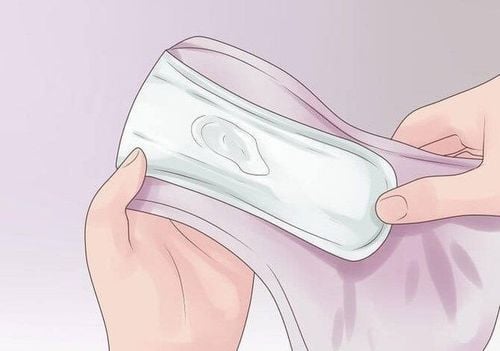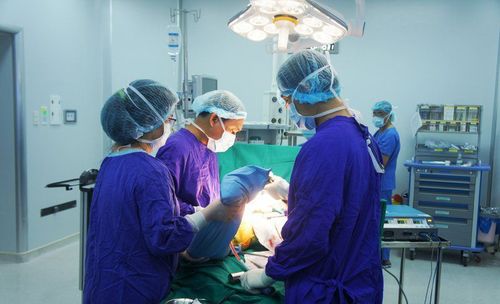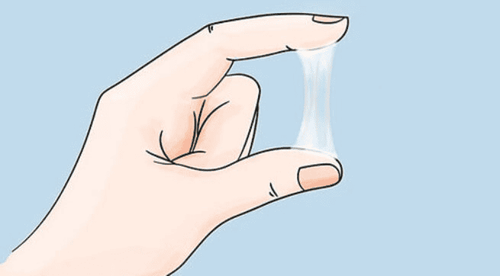This is an automatically translated article.
The appearance with other vaginal fistula organs is one of the common pathologies and directly affects our daily activities. The condition can cause emotional distress and physical discomfort, which can affect intimacy.
1. Find out what is a vaginal fistula?
A vaginal fistula is an abnormal connection between other organs such as your bladder-rectum and your vagina. Intestinal contents can leak through the fistula, allowing gas or stool to pass through your vagina.
Some vaginal fistulas are classified according to the location of communication with other organs as follows:
Vaginal-bladder fistula. This is the most common type. Vaginal-ureteral fistula. Vaginal-urethral fistula. Vaginal-rectum fistula. Vaginal-colon fistula. Vaginal-intestinal fistula.

Lỗ rò âm đạo là một kết nối bất thường giữa các cơ quan khác và âm đạo của bạn
2. Causes of vaginal fistula formation
A vaginal fistula can form due to many different causes.
Birth trauma Birth-related trauma is the most common cause of vaginal fistula. Fistulas can be caused by perineal tears that extend to the intestines, infection of an episiotomy – a surgical incision to widen the perineum during a vaginal birth. These can happen after a long, difficult, or hindered labor. These types of fistulas can also be related to injury to your anal sphincter, the muscle rings at the end of your rectum that help you hold stool.
Crohn's disease: The second most common cause of vaginal fistulas, Crohn's disease is an inflammatory bowel disease in which the lining of the digestive tract becomes inflamed. Having Crohn's disease increases the risk of vaginal fistula formation.
Cancer treatment or radiation in the pelvic area A cancerous tumor in your rectum, cervix, vagina, uterus or anal canal can lead to a vaginal fistula. Radiation therapy for cancer in these areas can also put you at risk. Vaginal fistulas caused by radiation usually form within six months to two years after treatment.
Surgery involving the vagina, perineum, rectum, or anus Before surgery on your lower pelvis, such as a hysterectomy (removal of the uterus), can in rare cases lead to the development of a fistula. Fistulas can develop as a result of trauma during surgery or because a leak or infection develops later.
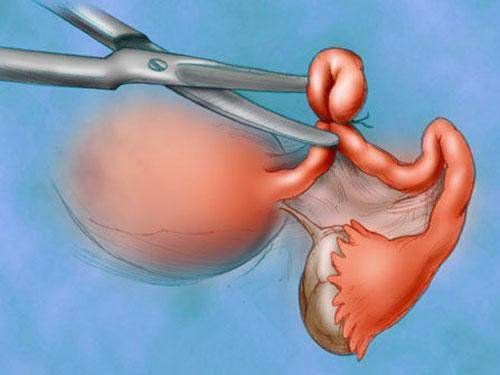
Một số trường hợp trước khi phẫu thuật vùng chậu dưới có thể gây ra một lỗ rò
Other causes A vaginal fistula can be caused by an infection in your anus or rectum; infection of the small, bulging sacs in your digestive tract (diverticulitis); long-term inflammation of the colon and rectum (ulcerative colitis); dry, hard stools stuck in the rectum; or vaginal trauma unrelated to childbirth.
3. Common Symptoms
Depending on the size and location of the fistula, you may have minor symptoms or serious problems with bowel control. Signs and symptoms of a vaginal fistula may include:
Gas, stool, or pus from your vagina Bad-smelling vaginal discharge Recurrent vaginal or urinary tract infections Irritation or pain in vulva, vagina and the area between the vagina and anus (perineum) Pain during sex
4. Choosing the treatment method for vaginal fistula
Symptoms of a vaginal fistula can be bothersome, but treatment is often effective. Treatment of fistula depends on the cause, size, location and its effect on surrounding tissues”
a) Medical treatment Antibiotics. If the area around your fistula becomes infected, you may be given a course of antibiotics before surgery. Infliximab. Infliximab (Remicade) may help reduce inflammation and heal fistulas in women with Crohn's disease. b) Surgery Most people need surgery to close or repair a vaginal fistula. Before surgery, the skin and other tissues around the fistula should be healthy and free of infection or inflammation. Your doctor may recommend waiting three to six months before surgery to make sure the surrounding tissue is healthy and to see if the fistula closes on its own. The goal is to remove the fistula and close the fistula by suturing the healthy tissues together. Surgical options include: + Stitch anal fistula or bio-tissue patch to the fistula to allow your tissue to grow into the patch and heal the fistula.
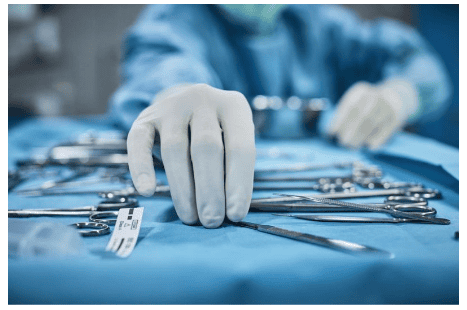
Phẫu thuật để đóng hoặc sửa chữa lỗ rò âm đạo là phương pháp phổ biến để điều trị bệnh
+ Use a graft taken from a nearby part of the body or fold a flap of healthy tissue over the fistula.
+ Repair the anal sphincters if they are damaged by a fistula or by scarring or tissue damage from radiation or Crohn's disease.
+ Perform colectomy before fistula repair in complicated or recurrent cases to redirect stool through the opening in the abdomen instead of through the rectum.
Most of the time, this surgery is not necessary. But you may need this if you have had tissue damage or scarring from previous surgery or radiation treatment, an ongoing infection or significant stool contamination, a cancerous tumor or an abscess.
If a colectomy is needed, your surgeon may wait 8 to 12 weeks before repairing the fistula. Usually after about three to six months and confirmation that your fistula has healed, a colectomy can be restored and normal bowel function restored.
Up to now, there have been many treatments for vaginal fistula. However, to ensure effective treatment, each patient needs to strictly follow the regimen and instructions from the doctor, especially after surgery.
Patients with rectal fistula can go to Vinmec International General Hospital for examination and treatment. There is a team of well-trained, professional and experienced gynecologists; system of modern equipment, meeting international standards; professional service quality, bringing satisfaction and comfort to customers.
If you have a need for consultation and examination at Vinmec Hospitals under the national health system, please book an appointment on the website for service.
Please dial HOTLINE for more information or register for an appointment HERE. Download MyVinmec app to make appointments faster and to manage your bookings easily.





